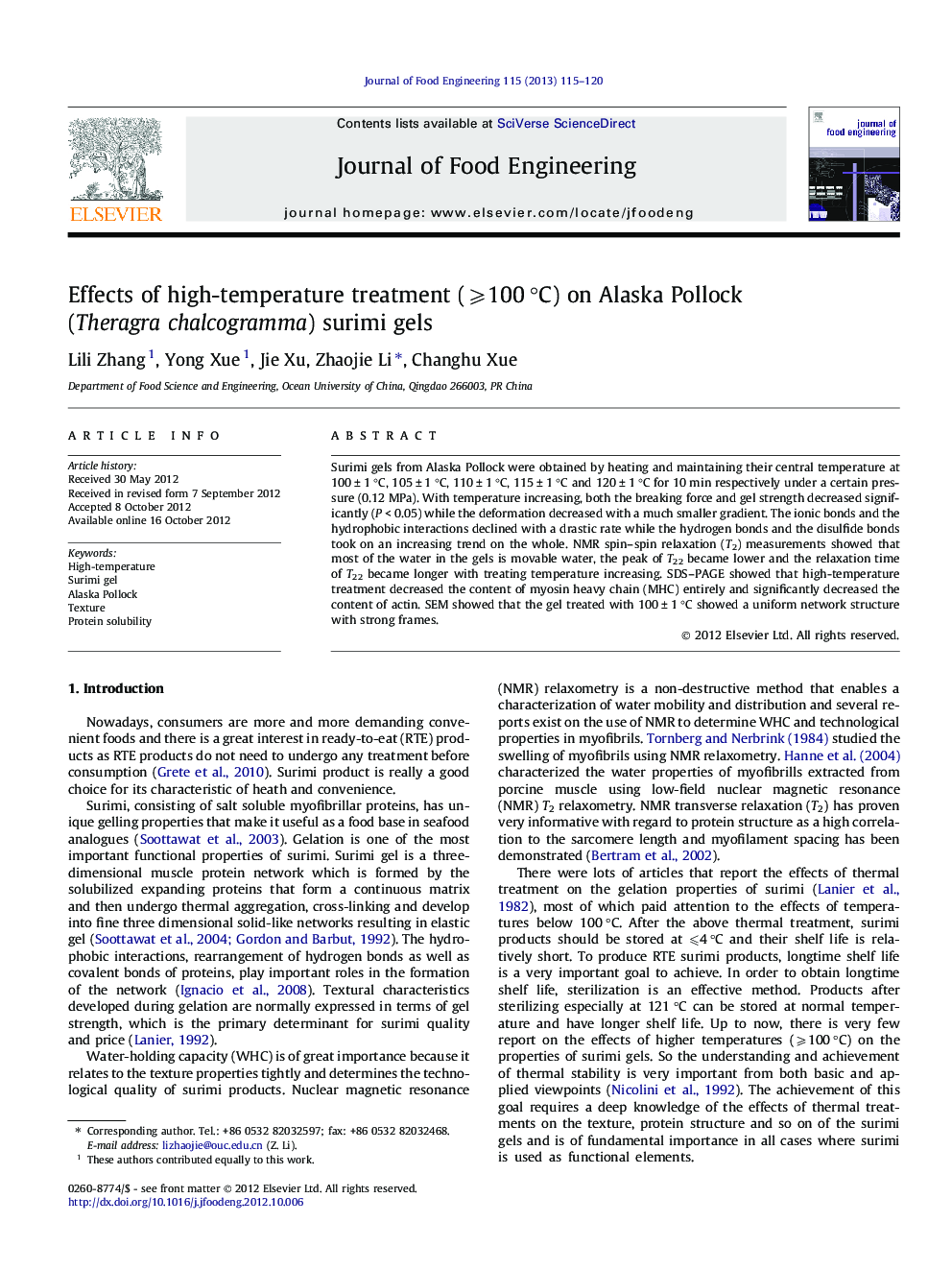| Article ID | Journal | Published Year | Pages | File Type |
|---|---|---|---|---|
| 223521 | Journal of Food Engineering | 2013 | 6 Pages |
Surimi gels from Alaska Pollock were obtained by heating and maintaining their central temperature at 100 ± 1 °C, 105 ± 1 °C, 110 ± 1 °C, 115 ± 1 °C and 120 ± 1 °C for 10 min respectively under a certain pressure (0.12 MPa). With temperature increasing, both the breaking force and gel strength decreased significantly (P < 0.05) while the deformation decreased with a much smaller gradient. The ionic bonds and the hydrophobic interactions declined with a drastic rate while the hydrogen bonds and the disulfide bonds took on an increasing trend on the whole. NMR spin–spin relaxation (T2) measurements showed that most of the water in the gels is movable water, the peak of T22 became lower and the relaxation time of T22 became longer with treating temperature increasing. SDS–PAGE showed that high-temperature treatment decreased the content of myosin heavy chain (MHC) entirely and significantly decreased the content of actin. SEM showed that the gel treated with 100 ± 1 °C showed a uniform network structure with strong frames.
► The effects of high-temperature treatment on the surimi gels were studied. ► The gel strength decreased significantly as treating temperature increased. ► The water holding capacity decreased with treating temperature increasing. ► High-temperature treatment resulted in serious aggregation of proteins.
